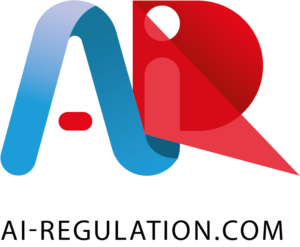On November 17, 2020, the Office of Management and Budget (OMB) in the White House released a “Memorandum for the heads of executive departments agencies” to provide “guidance to all Federal agencies to inform the development of regulatory and non-regulatory approaches regarding technologies and industrial sectors that are empowered or enabled by artificial intelligence (AI) and consider ways to reduce barriers to the development and adoption of AI technologies”.
Consistent with Executive Order 13859 “Maintaining American Leadership in Artificial Intelligence”, this Memorandum, which “sets out policy considerations that should guide, to the extent permitted by law, regulatory and non-regulatory approaches to AI applications developed and deployed outside of the Federal government”, constitutes the first ever guidance for Federal agencies on the Regulation of Artificial Intelligence applications.
Through this document, the OMB of the White House aims “to support the U.S. approach to free markets, federalism, and good regulatory practices (GRPs), which has led to a robust innovation ecosystem” and to ensure that Federal agencies promote technological innovation when considering regulations or policies that apply to AI applications, “while protecting American technology, economic and national security, privacy, civil liberties, and other American values, including the principles of freedom, human rights, the rule of law, and respect for intellectual property”.
The Memorandum is divided into 5 main parts:
Encouraging Innovation and Growth in AI (page 2)
The Memorandum recalls that Executive Order 13859 states that “the policy of the United States Government [is] to sustain and enhance the scientific, technological, and economic leadership position of the United State in AI”. The Memorandum emphasizes the importance of developing and deploying AI whilst enacting a regulatory approach “that fosters innovation and growth and engenders trust, while protecting core American values, through both regulatory and non-regulatory actions and reducing unnecessary barriers to the development and deployment of AI”.
To achieve this aim, Federal agencies must, for instance “avoid regulatory actions that needlessly hamper AI innovation and growth” or “avoid a precautionary approach that holds AI systems to an impossibly high standard such that society cannot enjoy their benefits and that could undermine America’s position as the global leader in AI innovation”.
Principles for the Stewardship of AI Applications (page 3)
The Memorandum proposes ten principles that agencies should take into consideration “when formulating regulatory and non-regulatory approaches to the design, development, deployment, and operation of AI applications, both general and sector-specific”.
The principles are as follows: public trust in AI, public participation, scientific integrity and information quality, risk assessment and management, benefits and costs, flexibility, fairness and non-discrimination, disclosure and transparency, safety and security, and inter-agency coordination.
For each principle, the Memorandum suggests that the action that a Federal agency takes is conditional on the risk being taken. For instance, in order to ensure public trust in an AI principle, the Memorandum takes the view of a risk-based approach as an “appropriate regulatory or non-regulatory response to privacy and other risks must necessarily depend on the nature of the risk presented and the tools available to mitigate those risks”.
Non-Regulatory Approaches to AI (page 7)
The Memorandum states that “an agency may determine, after considering a particular AI application, that either existing regulations are sufficient or that the benefits of a new regulation do not justify its costs, at that time or in the foreseeable future”. It highlights that, in such cases, “the agency may consider either not taking any action or, instead, identifying non-regulatory approaches that may be appropriate to address the risk posed by certain AI applications”. The document thus proposes examples of such non-regulatory approaches, including Sector-Specific Policy Guidance or Frameworks, Pilot Programs and Experiments, Voluntary Consensus Standards and Voluntary Frameworks. In relation to the issue of Non-regulatory Approaches to AI, Appendix A of the Memorandum provides “technical guidance on developing rules to inform the development of regulatory approaches for AI applications”.
Reducing Barriers to the Deployment and Use of AI (page 8)
Executive Order 13859 required the OMB to issue a memorandum to agencies to “consider ways to reduce barriers to the use of AI technologies in order to promote their innovative application while protecting civil liberties, privacy, American values, and United States economic and national security.” In this section, the Memorandum thus provides four non-exhaustive examples of actions that, outside the regulatory process, agencies can take in order to “create an environment that facilitate the acceptance and use of AI”.
- Access Federal Data and Models for AI R&D
- Communication to the Public
- Agency Participation in the Development and Use of Voluntary Consensus Standards and Conformity Assessment Activities
- International Regulatory Cooperation
Agency Plans to Achieve Consistency with this Memorandum (page 11)
The Memorandum recalls that Executive order 13859 requires that “implementing agencies with regulatory authorities review their authorities relevant to AI applications and submit plans to OMB on achieving consistency with this Memorandum”.
The Memorandum therefore states that the agency plan “must identify any statutory authorities specifically governing agency regulation of AI applications, as well as collections of AI-related information from regulated entities” and “report on the outcomes of stakeholder engagements that identify existing regulatory barriers to AI applications and high-priority AI applications that are within an agency’s regulatory authorities”. Accordingly, the OMB requests agencies to list and describe any planned regulatory activity or any regulatory activity that is being considered, and provides a template for this in Appendix B.
Source: https://www.whitehouse.gov/wp-content/uploads/2020/11/M-21-06.pdf

